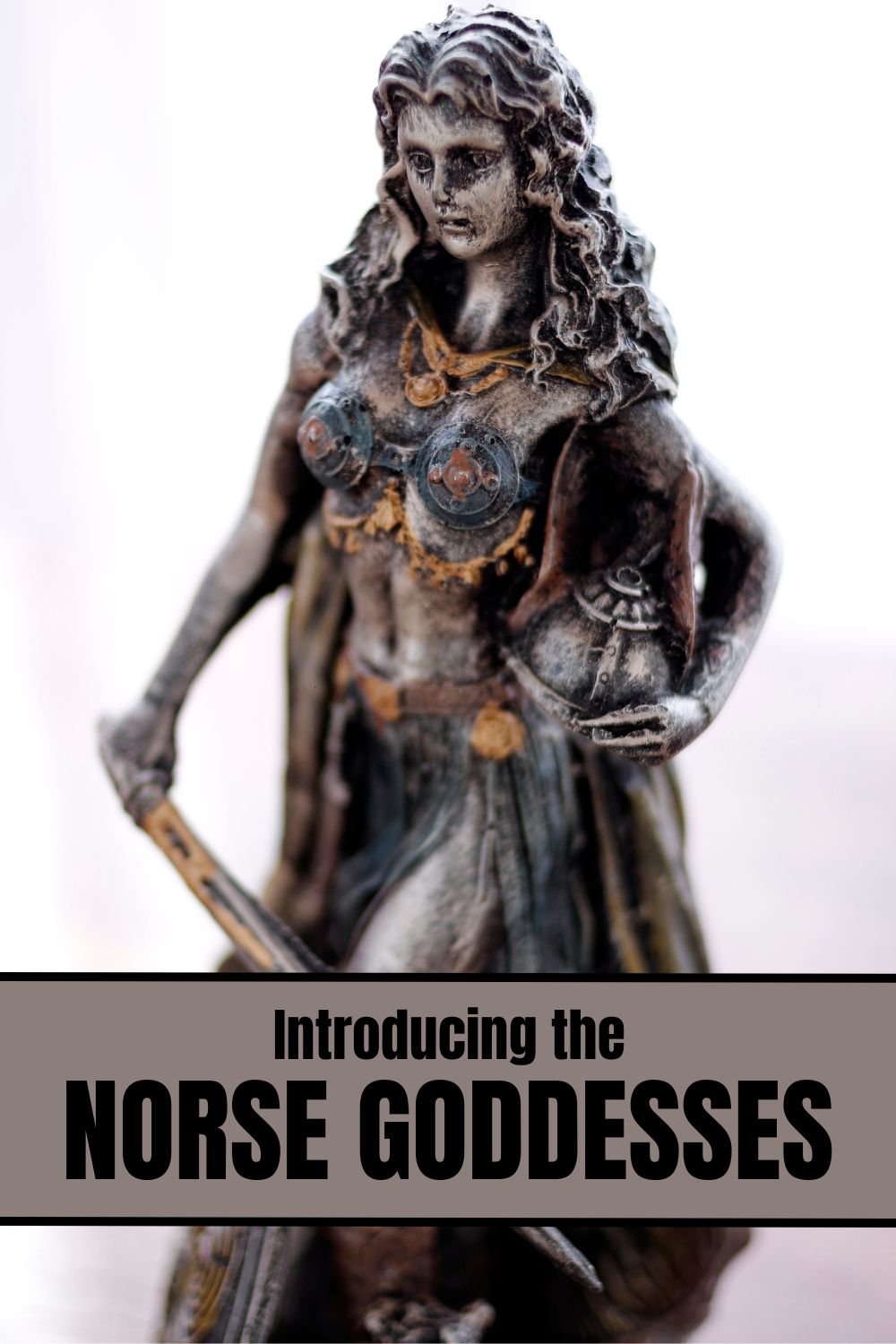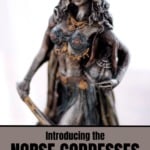From the all-knowing Queen of Asgard to the radiant goddess of love, beauty, and war, Norse Mythology is packed with leading female figures.
Driven by video games and movies, Norse mythology has enjoyed a resurgence of popularity in recent years. The tapestry of tales and beliefs that coloured the lives of the Norse and Germanic people more than 1,000 years ago intrigues many.
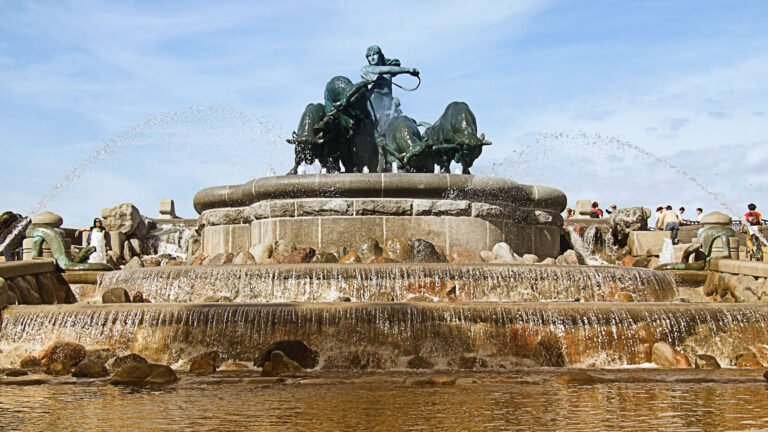
It is a fascinating area of study that presents us with gods and goddesses of exceptional complexity and vibrance.
This pantheon of divine figures, depicted in Old Norse literature such as the Poetic Edda and the Prose Edda, served not only as archetypal characters in tales of power, heroism, and tragedy but also as deeply symbolic representations of the various aspects of life and the natural world.
The role of goddesses in Norse mythology
In a culture often associated with masculinity, it may be surprising to some to discover that not all the Norse Gods were male. In fact, there are numerous goddesses that stand prominently in Norse mythology.
These divine women held their own unique powers and spheres of influence, often tied to fertility, love, wisdom, or warfare, and their stories are interwoven with elements of magic, mysticism, and profound human emotion.
This article aims to delve into the world of these Norse goddesses, exploring their stories, their roles, and their enduring influence.
Through the examination of these remarkable figures, we hope to paint a more comprehensive picture of the place and power of the divine feminine within the realm of Norse mythology. Let's start with the most famous Norse Goddesses.
Frigg: The all-knowing Queen of Asgard
Frigg, or Frigga, holds an exalted position in the pantheon of Norse goddesses. She is the queen of Asgard, the realm of the gods, and wife to Odin, the all-father.
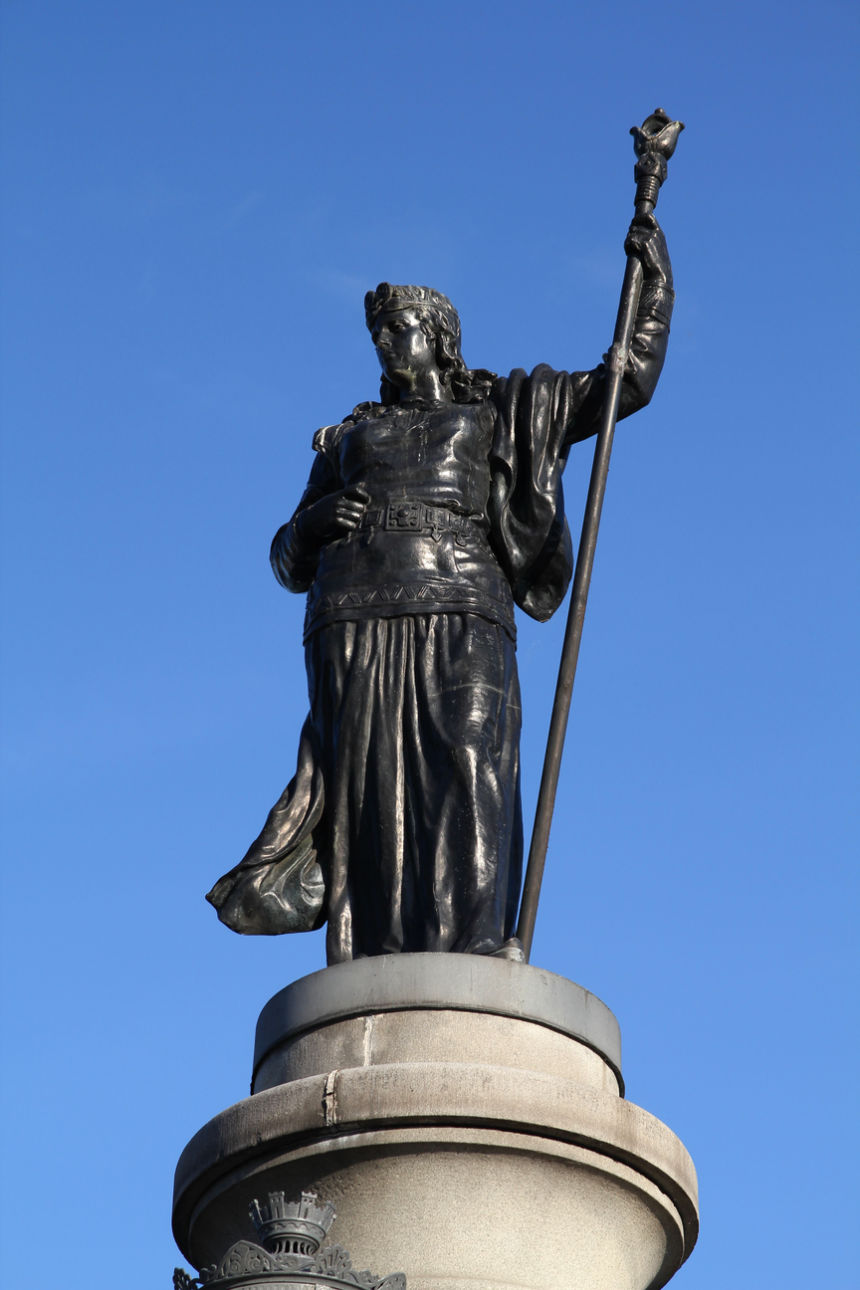
But Frigg is not merely defined by her relationships; she is a powerful deity in her own right, revered for her wisdom, foresight, and mastery of the domestic arts. In Norse mythology, Frigg is regarded as a goddess of the sky, motherhood, fertility, and marriage. She is often associated with domesticity and the protection of the home.
However, one of Frigg's most intriguing attributes is her prophetic ability. While she is bestowed with the knowledge of the future, she chooses to keep these visions to herself, demonstrating her discretion and wisdom.
One of the most poignant tales featuring Frigg is the story of her son, Baldr. Upon having a premonition of Baldr's death, Frigg goes to great lengths to prevent the tragedy, extracting promises from all things in the world not to harm him. However, she overlooks the seemingly harmless mistletoe, leading to Baldr's death when he is struck by a dart of mistletoe.
Frigg's desperate attempt to protect her son and the subsequent sorrow she experiences upon his death highlight her role as a mother figure within the Norse pantheon.
Her associations with love, nurturing, and protective instincts are emblematic of the importance of familial and marital ties in Viking society.
In the constellation of Norse mythology, Frigg shines as a goddess who embodies a balance of power and tenderness, wisdom and mystery, making her one of the most revered and multi-dimensional figures in the ancient Norse pantheon.
Freya: The radiant goddess of love, beauty, and war
Freya, also known as Freyja, is one of the most iconic goddesses in Norse mythology. Uniquely embodying a fusion of traditionally contradictory themes, she reigns as the goddess of love, beauty, fertility, and at the same time, war and death.
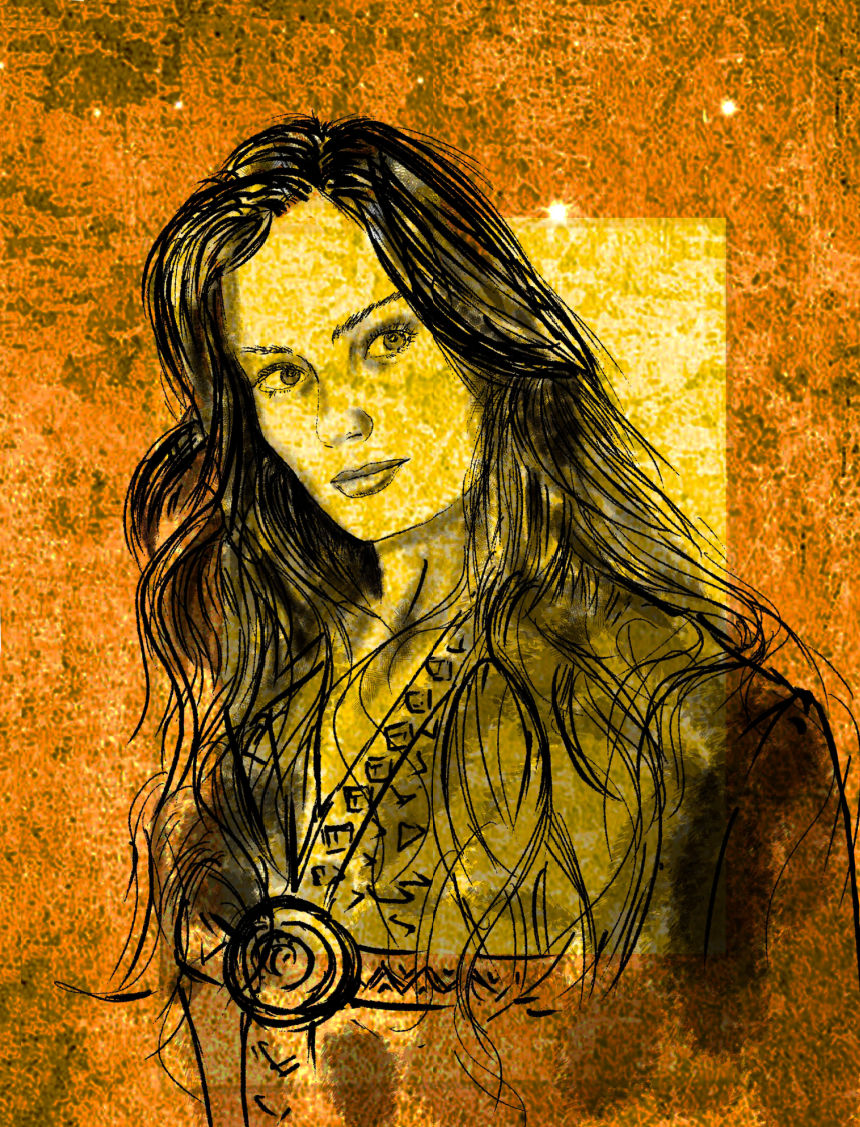
Freya's origins lie with the Vanir, a group of fertility gods, but she was sent to live with the Aesir, the primary group of gods, as a part of a peace agreement. Thus, she stands as a symbolic bridge between the two divine families, embodying traits from both.
One of the most striking aspects of Freya is her connection to love and beauty. As the goddess of love, she is often portrayed as a figure of desire and allure. Tales depict her crying tears of gold over the loss of her beloved husband Odr, illustrating her deep capacity for love and loss.
However, Freya is not merely a goddess of beauty and love. In stark contrast, she is also intimately associated with war and death. As a valkyrie, a chooser of the slain, she shares the right with Odin to claim the souls of warriors fallen in battle. Half of these brave souls would enter her heavenly field, Fólkvangr, a testament to her power and stature in the afterlife.
Freya also has an intriguing association with magic, particularly seidr, a form of Norse sorcery. Her knowledge of this magic, which was considered quite scandalous among the Aesir, further marks Freya as a complex and multifaceted goddess.
Freya's duality—her embodiment of love and war, beauty and death—makes her one of the most compelling figures in Norse mythology. She represents the myriad facets of existence, reflecting the Norse understanding of the complex interplay of life's joys and sorrows, love and loss, creation and destruction.
Skadi: The fierce goddess of winter and hunting
Skadi, also known as Skathi, is a unique figure among the Norse goddesses. Her origins lie in the Jotun, the giants, a race often at odds with the gods of Asgard. However, through a combination of marriage and her own formidable spirit, Skadi took her place among the Aesir, the principal group of gods.
Renowned as the goddess of winter, mountains, and hunting, Skadi is a symbol of rugged self-sufficiency and strength. She embodies the harsh, unyielding nature of winter and the mountains, illustrating the resilience and adaptability required to survive in such a challenging environment.

One of the most famous stories involving Skadi revolves around her marriage to the god Njord, a union agreed upon as part of reparations for the death of her father.
However, their marriage falters due to their contrasting natures—Njord's affinity for the sea clashes with Skadi's love for the mountains. This tale underscores Skadi's strong ties to her natural domains and her determination to stand by them.
In the end, Skadi's potent mix of toughness and independence mark her as a compelling figure in Norse mythology. Her presence highlights the respect the Norse had for the forces of nature and the survival skills they held in high regard.
Idun: The eternal youth-giving goddess of spring
Idun, also spelled Iðunn, is a critical figure in Norse mythology, though her presence in the myths is relatively quiet. As the goddess of spring and rejuvenation, Idun is the divine guardian of the apples of immortality, which she shares with the gods to maintain their youth and vitality.
Idun's role might not be as expansive as some of her counterparts, but her importance cannot be overstated. Without Idun's golden apples, the gods would age and their reign would falter, highlighting her essential function within the divine realm.
One popular tale involving Idun is when she is kidnapped by the giant Thjazi. During her absence, the gods begin to age rapidly, revealing their reliance on her restorative fruits. With the cunning of Loki, Idun is eventually rescued, and she returns to restore the gods to their youthful state.
Idun's symbolism extends to the earthly realm as well, reflecting the rejuvenation of nature after the harsh winter and the rejuvenating powers of good nutrition. In essence, Idun is a beacon of renewal, her story a testament to the cycles of life and the renewal that follows decay.
Lesser-known Norse goddesses
While Norse mythology boasts a plethora of known goddesses like Frigg, Freya, Skadi, and Idun, it also holds a range of less documented, yet equally intriguing divine women.
These lesser-known goddesses often hold very specialised domains, further highlighting the Norse people's reverence for the varying aspects of life and the natural world.
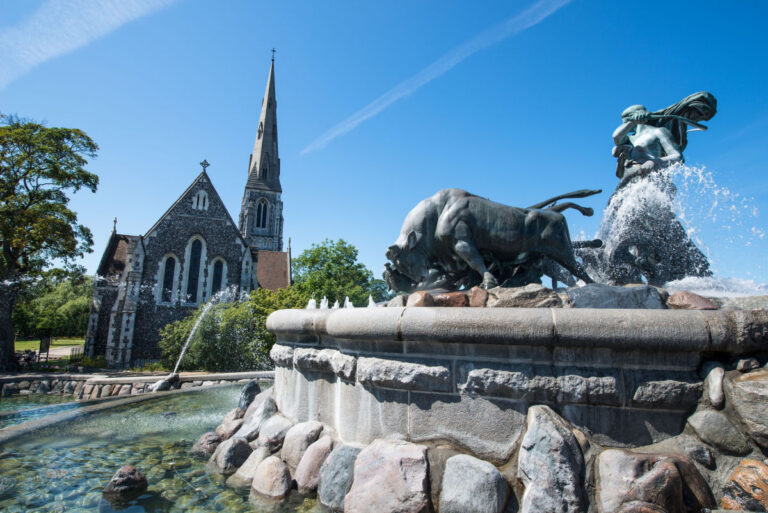
Let's turn our attention to a few of these more obscure, but still highly significant, goddesses: Sif, Nanna, Eir and Gefjon.
Sif: Known primarily as the wife of Thor, the god of thunder, Sif is a goddess whose most distinctive feature is her magnificent golden hair. This hair, seen as a symbol of fertility and prosperity, is central to a popular myth in which Loki, the trickster god, shears it off as a prank. Thor, enraged, forces Loki to replace Sif's hair, resulting in a magical headpiece of gold that grows as real hair. Sif, thus, represents the fertility of the earth, harvested and then regrown, linking her to the cycles of nature.
Nanna: Nanna is best known as the wife of Baldr, the god of light and purity, and her role is closely tied to her relationships. Her most significant moment in the Norse sagas comes in the wake of tragedy: upon Baldr's death, Nanna dies of a broken heart, showcasing a deep personification of familial love and grief. In death, she continues to be associated with familial care, offering gifts to those who journey to the afterlife.
Eir: Eir is a goddess less mentioned in the sagas but holds an important role as a goddess of healing. Her name, which translates to “mercy” or “protection,” highlights her association with health and wellness. In some sources, Eir is described as one of the Valkyries, adding another layer to her character. Though her tales are not as prevalent, her role in healing the wounded marks her significance in a society frequently engaged in warfare.
Gefjon: Often a symbol of resourcefulness and abundance, Gefjon (or Gefion) isn't as well-known as deities like Frigg or Freya, but is referenced in several Old Norse texts. The most famous story featuring Gefjon is related to the creation of the island of Zealand, which is now part of modern-day Denmark and where Copenhagen is located. She is remembered today with a notable statue and fountain in the Danish capital city.
These lesser-known goddesses, each with their own stories and domains, contribute to the rich diversity of the Norse pantheon. Their roles might not be as dominant as their more famous counterparts, but they bring a range of life aspects into divine focus, from health and healing to familial love and the cyclical nature of fertility.
Influence of Norse goddesses on modern culture
Norse goddesses hold influence that extends beyond the ancient world, continuing to shape modern literature, pop culture, religious practices, and even our days of the week. For example, Friday is named after Freya or Frigg.
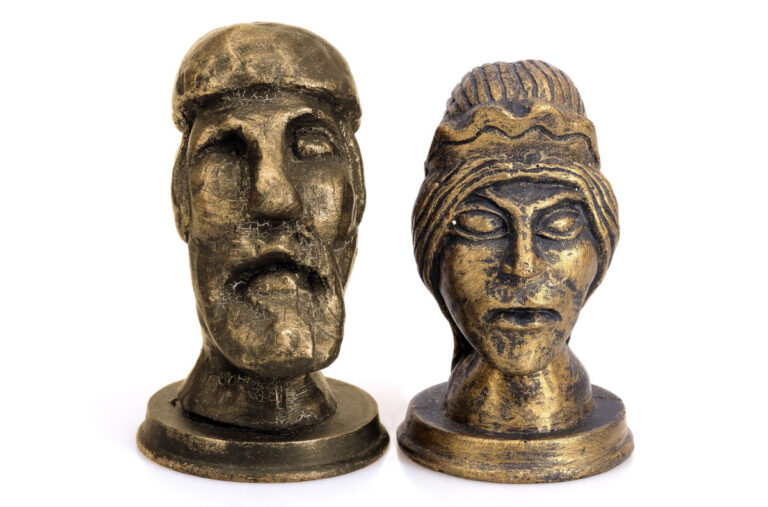
The complex characters and compelling narratives of these divine women have served as a wellspring of inspiration, lending depth and historical richness to a variety of modern works and ideologies.
In literature, the Norse goddesses have found new life, particularly within the genres of fantasy, romance and historical fiction. Authors, inspired by their intricate tales and dynamic personalities, often weave elements of these goddesses into their character development and world-building.
For instance, characters who are strong, fiercely independent women warriors may draw upon aspects of the goddess Skadi, while those embodying themes of love, beauty, and fierce protection could mirror traits of Freya.
Pop culture, too, has embraced these goddesses, especially in the realms of film, television, and graphic novels. In the Marvel Cinematic Universe, for example, the character of Frigga, depicted as the mother of Thor and wife to Odin, showcases the Norse goddess's wisdom and motherly attributes.
Video games like “God of War” also introduce a new generation to these powerful female figures, keeping their stories alive in the digital age.
Moreover, Norse goddesses have seen a resurgence in spiritual practices, notably within neo-pagan traditions such as Asatru and Wicca. Followers often honor these goddesses through rituals, viewing them as representations of nature, femininity, and various life aspects.
Freya's associations with love and magic, Frigg's wisdom and motherly attributes, and even the lesser-known Eir's healing abilities are often highlighted in these practices.
In Norway's capital city, the sports club Frigg Oslo proudly takes its name from the Norse goddess.
Did you know about these goddesses and their important role in Norse mythology? Let us know your thoughts in the comments below. If you enjoyed this post, please consider sharing it on Facebook or Pinterest.
